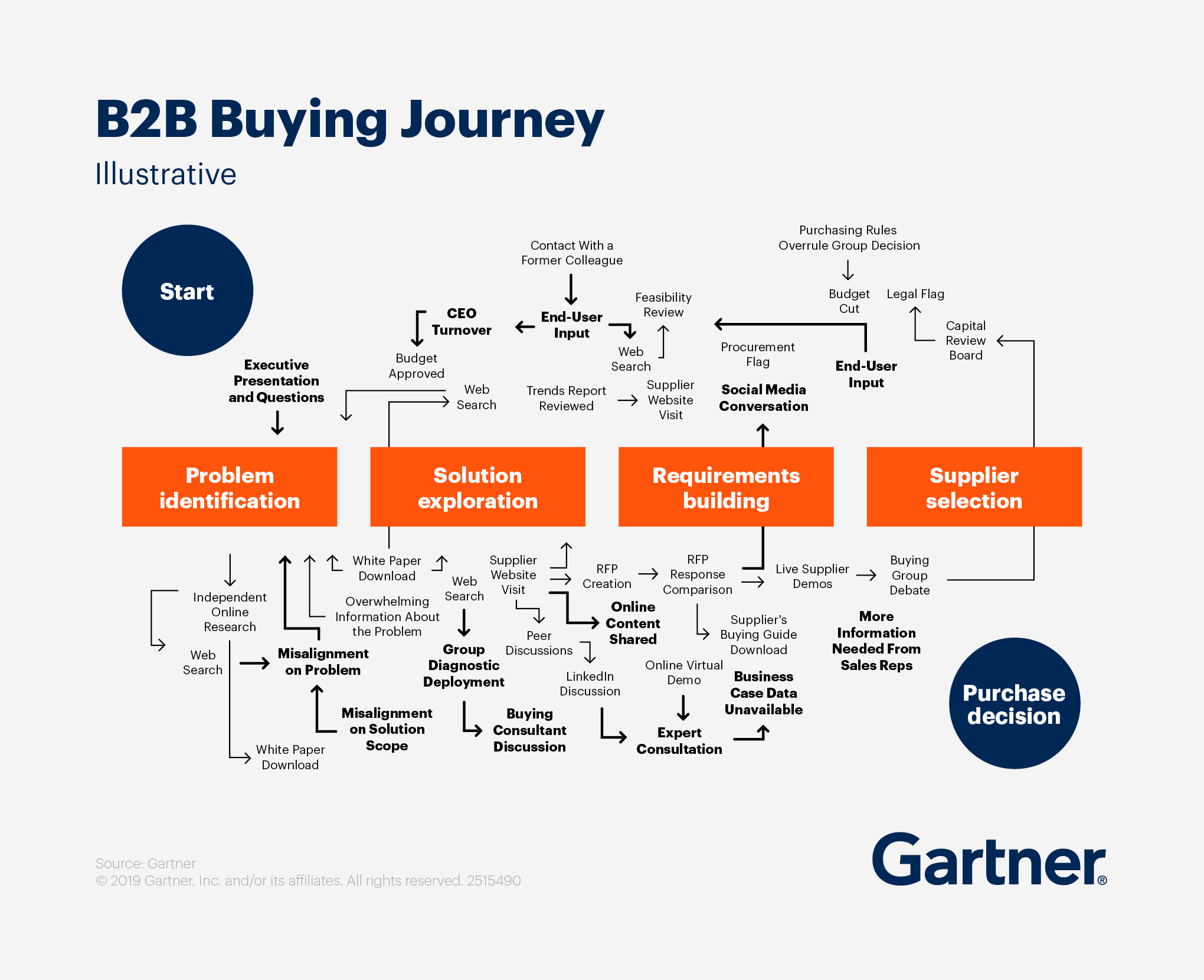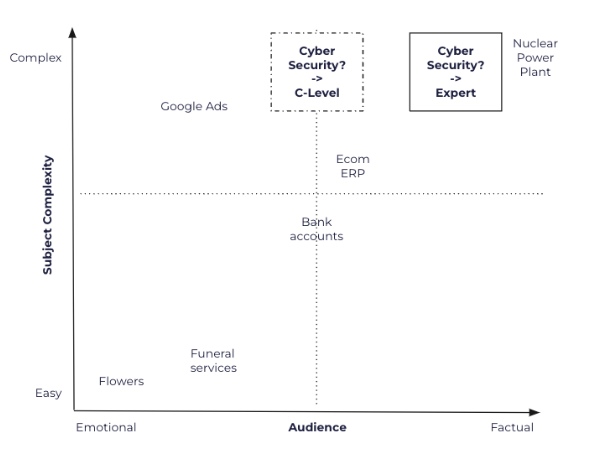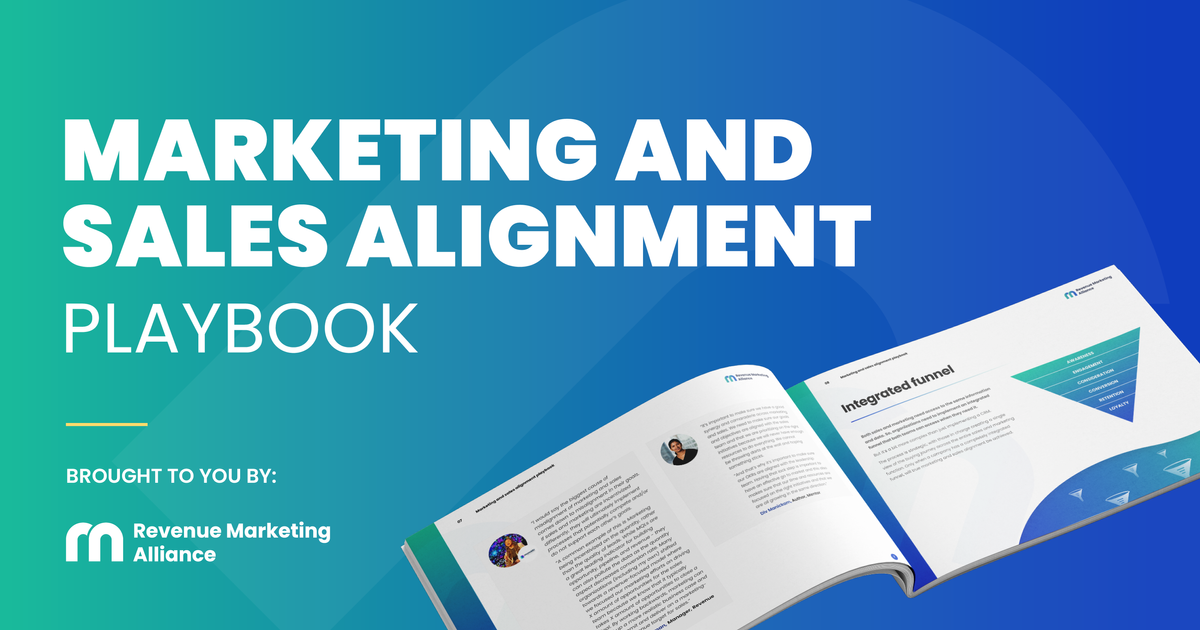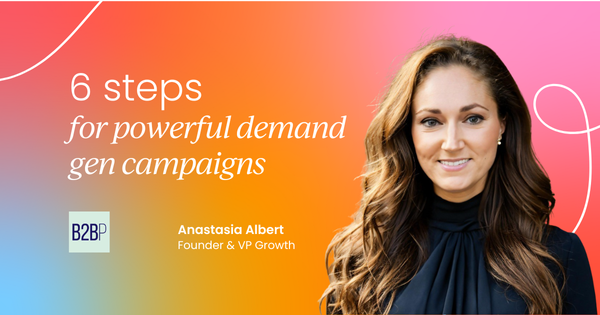In the B2B tech industry, generating demand is critical to drive growth. While many companies traditionally focused on capturing existing demand, this approach is no longer sufficient.
Only about 5% of potential customers are actively in the market for your product at any given time, leaving the remaining 95% unaware of their need or your solution. This underscores the importance of creating demand to reach and engage this broader audience.
In this article, we will explore how to create compelling demand generation campaigns by understanding your target audience, setting clear objectives, selecting the right channels, crafting engaging content, and measuring success.
Understanding your target audience
The first step in creating an effective demand generation campaign is deeply understanding your ideal customer profile (ICP), buyer personas, and the buyer decision process.
Defining your ICP and personas
Understanding your target audience begins with defining your ICP and buyer personas. Segment your audience based on criteria such as industry, geo location, company size, revenue, or customer focus.
Additionally, identify any red flags or negative signals that might indicate a poor fit for your product. Within each segment, key personas will emerge, including decision-makers, champions, and influencers who play crucial roles in the buying process.
Creating persona profiles
To effectively target these personas, create detailed persona cards. These should include job titles, goals, challenges, real quotes, key performance indicators (KPIs), common objections, and how your product can address their pain points.
This deep understanding allows you to tailor your messaging and ensure it resonates with the specific needs and challenges of your audience.

Creating your target account list
If you are running a campaign for the enterprise or mid-market segment, you will need to create a target account list. For your campaign to be successful, build audiences as homogeneous as possible to be able to provide highly relevant content and messaging.
When building your list you might want to be even more granular, e.g. focusing on only one specific industry at a time. Of course your list needs to be big enough to be eligible for certain channels (e.g. LinkedIn), so keep that in mind when creating your target account list. Depending on the size of the audience, you'll choose one channel vs. another.
Setting campaign objectives
Once you understand your audience, it's crucial to set clear and measurable campaign objectives, KPIs and Metrics. A common mistake is confusing KPIs with metrics. While a campaign may have several metrics to track its success, it should focus on one primary KPI (per objective) that aligns with the overall business goal.
For instance, if your goal is to increase consideration of buying your product, the KPI is product consideration, while the supporting metrics could include engagement rates, webinar signups / participants, content downloads etc. See the below overview for clarification:
This framework is from “Think with Google”.
Ensure that your campaign objectives align with broader business goals. This alignment ensures that every marketing effort contributes to the company’s growth and success.
Crafting content
Content is at the heart of any demand generation campaign. It's essential to consider where your audience is in the buyer’s decision journey and what they need at each step in order to buy.
While some prospects may be unaware of their need for your product, others may be actively evaluating solutions already. And B2B buying journeys are more and more complex and need more touchpoints.
You might remember Gartner’s illustration:

While B2B marketers often think in terms of buyer stages, it’s important to not limit content to certain prospects, because you assume they are in that current stage. It’s almost impossible to gauge the current buyer stage, so showing different content to your audience allows them to self-select what is most relevant.
The content you create must be relevant and valuable to your audience, have unique perspectives, proprietary data or feature thought leaders or top voices from the
industry. A great framework to use in order to establish how much expertise you need to create your content and if you can do it in-house or outsource it, is the 2x2 framework by Norman Rohr.

For example, if you are a cyber security provider targeting CIOs / CISOs, the level of expertise you need to create content will be very high. There is probably also no such thing as upper funnel content as this audience is generally quite aware of the risks of cyber attacks. They are also more likely to listen to industry experts than companies, so you will need trusted voices to be featured or be the author of the content piece.
A great example for data driven content from my time at Project A Ventures, was one of our portfolio companies Uberall. The customer experience platform used its own proprietary location data to showcase the best location management platforms.
Exploring content formats
Different formats resonate differently with audiences. While white papers are common in B2B marketing, they must be in-depth and provide substantial value to be effective.
Don’t underestimate the power of educational content delivered through videos, webinars, LinkedIn events, or even short, ungated snippets. These formats can serve as effective entry points to introduce your product and engage your audience.
Chris Walker, founder of Refine Labs, has famously introduced live Q&A sessions with marketing folks to get direct feedback on his principles and ideas. You can leverage partnerships to get maximum exposure on created content. I have launched successful content campaigns with Hubspot, where we promoted an ebook on automation in ecommerce.
Again the formats really depend on your target audience and what their daily routines look like. To give an example I have used a Black Friday checklist targeting ecommerce companies preparing them for Black Friday.
That said, timing is everything! As ecommerce businesses have clear peak seasons, you better not launch your checklist shortly before Black Friday.

Selecting the right channels
As you have seen above, buyer decision journeys are complex and need multiple touchpoints, so when it comes to choosing appropriate channels, think holistically and multichannel not just in terms of paid channels, but also in terms of owned channels like email to continue the journey after acquisition.
To select the right channels, start by analyzing where your target audience is most active. Different buyer personas may favor different platforms based on their roles, industries, and preferences.
Ask the following questions: How does your target audience realize the pain? Do they see something on LinkedIn? Do they visit a specific event? Do they follow a certain industry expert?
The channel mix will differ a lot depending on whether you are an SME, mid-market or enterprise play.
For example:
- C-level executives at large enterprises: These decision-makers might spend more time at exclusive conferences, trust only specific sources and are rather reactive.
- Mid-level managers at SMEs: These professionals might use platforms like Meta for entertainment. They might also attend webinars or online workshops to enhance their skills.
- Technical professionals: Developers and IT managers might be more inclined to engage with content on GitHub, Stack Overflow, or industry-specific communities.
Once you’ve identified where your audience spends their time, consider how different content formats perform across these channels.
Some examples on how to choose the right content format:
- Video content: Videos are highly engaging and can convey complex information quickly. They perform exceptionally well on platforms like YouTube, LinkedIn, and Meta (Facebook). For example, a product demo video or a customer testimonial can attract significant attention on YouTube, while short, informative videos might resonate more on LinkedIn.
- Webinars and virtual events: Webinars are excellent for in-depth educational content and are best promoted through email campaigns, LinkedIn events, or partnerships with industry organizations.
- Written content like articles, white paper, reports or case studies can be versatile. LinkedIn and Meta are strong platforms for sharing thought leadership articles, while trusted media or research organizations can give you credibility for reports.
Coordinating with sales
It’s critical to ensure your sales team is aligned with your demand generation efforts. Provide detailed briefings that outline campaign goals, key messages, and follow-up sequences.
I usually let content suggest followup sequences for the BDR team, however, they should be able to adapt the templates based on their own best practices and tonality. This collaboration ensures that leads generated by the campaign are effectively nurtured through the sales pipeline.
Set clear handover processes – when is the prospect ready to speak to sales? How many signals are needed? Or what is the right trigger? This one isn’t very easy. There is no right or wrong. There is just testing and adjusting your scoring to get best results.
Measuring success
In cases of long sales cycles, calculating ROI can be challenging. Instead, focus on measuring pipeline contribution from marketing efforts. For campaigns with shorter sales cycles, ROI can be calculated more directly by tracking closed deals within a specific period.
For account-based marketing (ABM/ ABX) campaigns, it’s important to monitor progress with target accounts on a weekly basis. These initiatives require close collaboration between marketing and sales, and reporting should reflect this joint effort. The most suitable metric for ABM/ ABX is account engagement.
As already stated above, different KPIs, channels and formats will require different metrics. For example, video content on Facebook might be measured by video views rather than clicks, indicating engagement. Select metrics that provide meaningful insights into your campaign's effectiveness based on the channel used.
Be sure to separate source levels (inbound/ outbound/ partner/ ABX, paid social, LinkedIn) and conversion types (webinar, ebook etc.) to be able to report on your success. Last but not least, decide on your attribution model, whether first touch, last touch, or a multi-touch approach like V-shape or W-shape, is essential for accurate performance measurement.

Conclusion
Creating compelling demand generation campaigns requires a deep understanding of your target audience, clear and measurable objectives, unique expert content, strategic channel selection, and clear reporting structure.
By following these steps and continually optimizing your efforts, you can successfully generate demand, engage your audience, and drive growth for your business.
Anastasia Albert, Founder of B2B Practitioners
12 years of experience in marketing, tech & venture development, 2 exits, 2 unicorns, 1 failed startup.
As LSE alumna, Anastasia started her career at Scholz & Friends, a top agency in Germany, and then joined the vibrant tech scene in Berlin. She worked with B2B tech companies, helping them grow and get acquired by big names like SAP and Swisscom.
At the operational venture capital fund, Project A Ventures, Anastasia led marketing and helped startups, scale-ups and private equity investments with growth related topics.
Her projects included companies like healthcare unicorn Kry, fintech unicorn Trade Republic and customer experience platform Uberall. Later, Anastasia took over Growth Marketing at Xentral, a business software backed by venture capital firm Sequoia.
She led a team of digital, content, field and partner marketers and played a key role in laying the foundations for growth. In 2023 Anastasia founded B2B Practitioners – a Go-To-Market advisory focused on B2B tech companies.
Another very important aspect of creating campaigns is ensuring your marketing and sales teams are aligned!
Download our playbook to start seeing:
- Increased revenue
- Improved customer retention
- Better win rates
- Increased renewals




 Follow us on LinkedIn
Follow us on LinkedIn



